Product Description
| Product Name | Shaft collar |
| Material | stainless steel, C45 |
| Weight | 13-620g |
| Bore | 1/2 in- 5 1/4 in |
| Item | hub and plate |
| Type | Set Screw/ single split / double split |
| packing | plastic bag +paper box +wooden box +wooden pallet |
1. Engineering: machine tools, foundry equipments, conveyors, compressors, painting systems, etc.
2. Pharmaceuticals& Food Processing: pulp mill blowers, conveyor in warehouse, agitators, grain, boiler, bakery machine, labeling machine, robots, etc.
3. Agriculture Industries: cultivator, rice winnower tractor, harvester, rice planter, farm equipment, etc.
4. Texitile Mills: looms, spinning, wrappers, high-speed auto looms, processing machine, twister, carding machine, ruler calendar machine, high speed winder, etc.
5. Printing Machinery: newspaper press, rotary machine, screen printer machine, linotype machine offset printer, etc.
6. Paper Industries: chipper roll grinder, cut off saw, edgers, flotation cell and chips saws, etc.
7. Building Construction Machinery: buffers, elevator floor polisher mixing machine, vibrator, hoists, crusher, etc.
8. Office Equipments: typewriter, plotters, camera, money drive, money sorting machine, data storage equipment, etc.
9. Glass and Plastic Industries: conveyor, carton sealers, grinders, creeper paper manufacturing machine, lintec backing, etc.
10. Home Appliances: vacuum cleaner, laundry machine, icecream machine, sewing machine, kitchen equipments, etc.
/* January 22, 2571 19:08:37 */!function(){function s(e,r){var a,o={};try{e&&e.split(“,”).forEach(function(e,t){e&&(a=e.match(/(.*?):(.*)$/))&&1
| Material: | Stainless Steel, C45 |
|---|---|
| Load: | Drive Shaft |
| Stiffness & Flexibility: | Flexible Shaft |
| Journal Diameter Dimensional Accuracy: | IT6-IT9 |
| Axis Shape: | Straight Shaft |
| Shaft Shape: | Real Axis |
| Samples: |
US$ 0.1/Piece
1 Piece(Min.Order) | |
|---|
| Customization: |
Available
| Customized Request |
|---|

Can I find information on the application of split collars in power transmission systems?
Yes, you can find information on the application of split collars in power transmission systems. Split collars play a vital role in power transmission applications, ensuring secure and precise positioning of components on shafts. Here’s how they are commonly used in power transmission:
- 1. Securely Fastening Components: Split collars are used to secure various components like pulleys, sprockets, and gears to shafts in power transmission systems. They provide a strong grip, preventing slippage and ensuring efficient power transfer.
- 2. Easy Installation and Adjustment: Split collars’ design allows for easy installation and quick adjustment. This is particularly useful when aligning components for optimal performance and when maintenance or component replacement is necessary.
- 3. Versatility in Design: Split collars come in different designs, including single-split, double-split, and triple-split variants. This versatility enables engineers to choose the most appropriate collar for specific power transmission requirements, taking into account the transmitted torque and axial loads.
- 4. Compatibility with V-Belt Drives: In V-belt drive systems, split collars are often used to secure pulleys onto shafts. This secure connection ensures that power is efficiently transferred from the drive pulley to the driven pulley via the V-belt.
- 5. Timing Belt Drives: Timing belt drives, commonly used in applications where precise synchronization is required, rely on split collars to secure timing pulleys to the shaft. This is critical for maintaining accurate timing and preventing belt slip.
- 6. Chain Drives: In chain drive systems, split collars are employed to secure sprockets to shafts. The collar’s grip ensures that the sprocket and chain are securely connected for reliable power transmission.
- 7. Conveyor Systems: Split collars are used in conveyor systems to secure drive pulleys and idler pulleys to the conveyor shafts. This is essential for smooth and efficient material handling and transportation.
- 8. Reduction Gearboxes: Power transmission systems often incorporate reduction gearboxes. Split collars are used to secure various components in these gearboxes, ensuring precise gear alignment and reliable torque transfer.
Information on the application of split collars in power transmission systems can be found in engineering manuals, manufacturer documentation, technical articles, and online resources related to mechanical power transmission. Manufacturers and suppliers of split collars often provide specific details and guidelines for their use in power transmission applications.
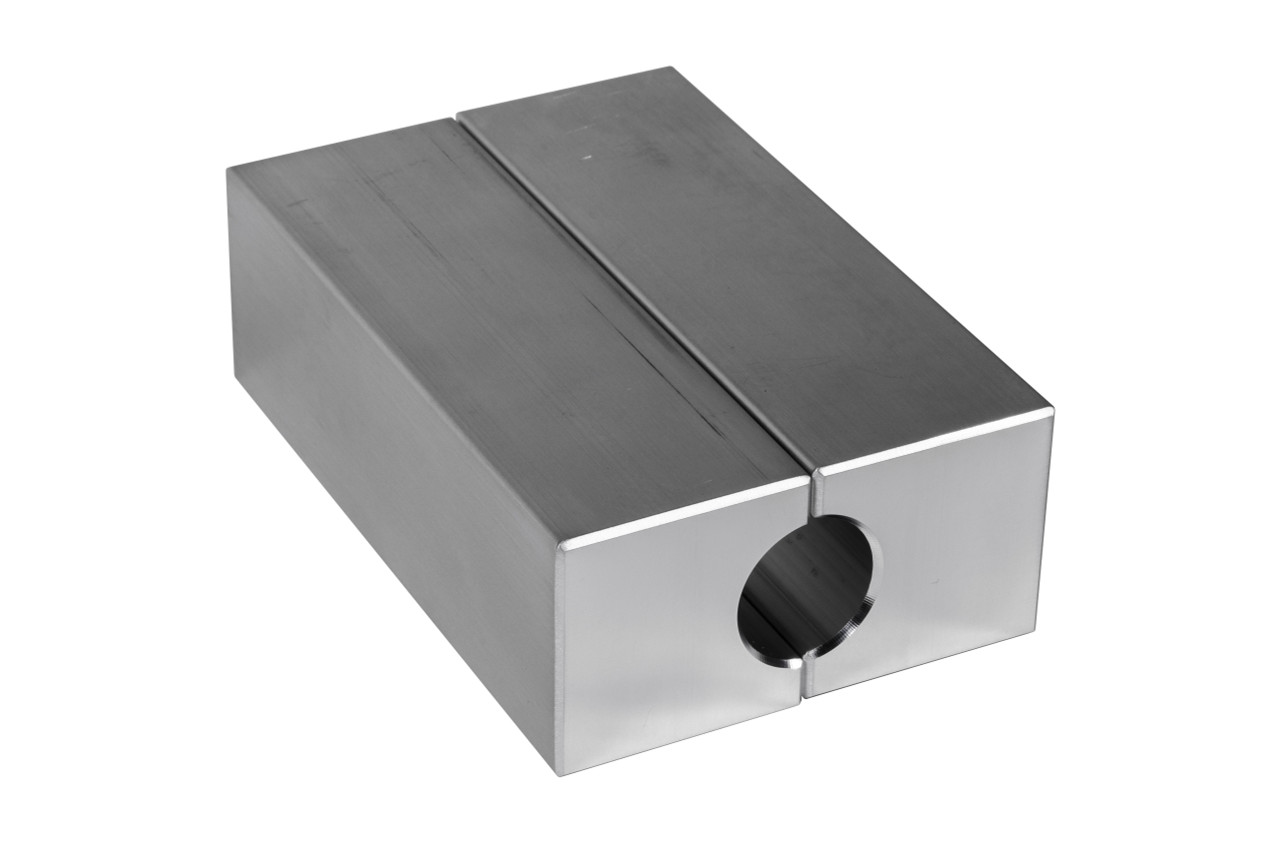
Can you provide recommendations for cost-effective split collars catering to different budget constraints?
Cost-effective split collars are available to cater to various budget constraints. Here are some recommendations based on different budget levels:
- 1. Economy Split Collars: For tight budgets, consider economy split collars made from materials like steel or zinc-plated steel. These collars are cost-effective and provide reliable performance for many applications.
- 2. Plastic Split Collars: Plastic split collars, such as those made from nylon or acetal, are often affordable and suitable for budget-conscious projects. They are lightweight and corrosion-resistant.
- 3. Single-Split Collars: Single-split collars are generally more budget-friendly than double-split or triple-split versions. While they provide effective shaft clamping, they may have slightly lower holding power.
- 4. Basic Materials: Opt for split collars made from basic materials, such as steel or aluminum, without specialized coatings or treatments. These collars are economical while meeting standard requirements.
- 5. Bulk Purchases: Buying split collars in bulk can lead to cost savings. Suppliers often offer discounts for larger quantity orders, making it a cost-effective choice for businesses with high usage.
- 6. Off-Brand or Generic Options: Consider off-brand or generic split collars from reputable suppliers. These alternatives can be more affordable than well-known brand names while still meeting quality standards.
- 7. Online Marketplaces: Explore online marketplaces that offer a wide range of split collars. Price comparison and user reviews can help you find affordable options that meet your specific needs.
- 8. Local Suppliers: Check with local industrial suppliers and distributors for cost-effective split collar options. Purchasing locally may save on shipping costs and lead to better deals.
- 9. Consider Material Substitutes: In some cases, you can use a different material or type of collar that is more budget-friendly while still meeting your application requirements. Consult with suppliers for suitable alternatives.
When selecting cost-effective split collars, it’s essential to balance budget constraints with the specific requirements of your application. While cost savings are important, ensure that the chosen collars meet safety, performance, and durability standards for your project.
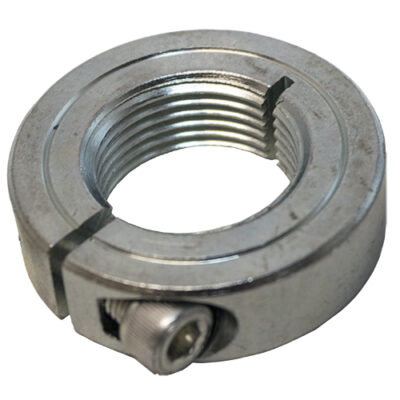
Can you recommend split collars suitable for applications with limited installation space?
Absolutely, there are split collars specifically designed for applications with limited installation space. These compact and space-efficient collars offer reliable performance in tight quarters. Here are some recommendations:
- 1. Thin-Line Split Collars: Thin-line split collars are engineered to have a reduced profile, making them ideal for applications with limited space. They are available in various materials and are designed for easy installation and removal.
- 2. Low-Profile Split Collars: Low-profile split collars are designed to be shorter in height, allowing them to fit into tight spaces without protruding. These collars are commonly used in compact machinery and equipment.
- 3. Clamping Lever Split Collars: Split collars with clamping levers provide a secure grip while offering quick and tool-free adjustments. The lever design is efficient in applications where accessibility is limited.
- 4. Set Screw Miniature Split Collars: Miniature split collars equipped with set screws are designed for small shaft sizes and limited space. They provide a strong hold without compromising space requirements.
- 5. Threaded Split Collars: Threaded split collars are compact and can be installed using simple hand tools. They are suitable for applications where you need a secure fit in confined spaces.
- 6. Plastic Split Collars: Some plastic split collars, such as those made from acetal or nylon, are compact and lightweight. They are corrosion-resistant and ideal for applications with size constraints.
- 7. Step Bore Split Collars: Split collars with a step bore design provide a smaller contact area on the shaft, making them space-efficient. They are effective for securing components in limited spaces.
- 8. Double Split Collars: Double split collars offer exceptional holding power while maintaining a compact design. They are often used in applications where space is a premium.
When selecting a split collar for applications with limited installation space, consider factors such as the shaft diameter, material compatibility, and the available height and width for collar installation. Additionally, always refer to the specific manufacturer’s recommendations and product specifications to ensure a proper fit.


editor by Dream 2024-05-02
China Custom Scjpj Black Oxide Coating Shaft Collars with 2 PCS Hex Socket Head Cap Screw balanced shaft collar
Product Description
Secure items to either side of these collars-each half has a flat end with a tapped hole. The two-piece design allows you to install them anywhere on a shaft without removing components or having access to the ends of the shaft. Tighten or loosen with the clamping screws. The 2 halves press evenly around the outside of shafts, so they hold tight without causing damage.
Electroless Nickel Plating steel collars have some corrosion resistance. Aluminum collars are lightweight with good corrosion resistance. 1045 carbon steel collars have excellent corrosion resistance.
/* March 10, 2571 17:59:20 */!function(){function s(e,r){var a,o={};try{e&&e.split(“,”).forEach(function(e,t){e&&(a=e.match(/(.*?):(.*)$/))&&1
| Standard: | GB |
|---|---|
| Material: | Carbon Steel |
| Connection: | Side Mount, Split |
| Surface Treatment: | Electroless Nickel Plating |
| Head Type: | Round |
| Tightening Method: | Two Piece Clamp-on |
| Samples: |
US$ 4.5/Piece
1 Piece(Min.Order) | |
|---|
| Customization: |
Available
| Customized Request |
|---|
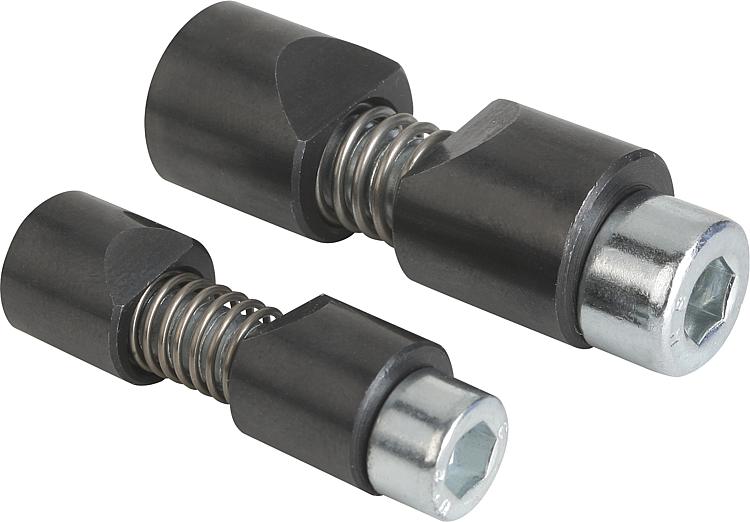
Are there tutorials available on selecting the right split collar based on environmental conditions?
Yes, you can find tutorials and educational resources on selecting the right split collar based on environmental conditions. Choosing the appropriate split collar is crucial to ensure optimal performance in different environments. Here’s where to find tutorials and guidance:
- 1. Manufacturer Websites: Many split collar manufacturers provide resources on their websites, including selection guides. These guides often consider factors like temperature, humidity, and chemical exposure to help you choose the right collar for your specific environment.
- 2. Online Engineering Communities: Engineering forums and communities frequently discuss the selection of components, including split collars. You can ask questions and gather insights from experienced engineers regarding environmental considerations.
- 3. YouTube and Video Platforms: Video tutorials on platforms like YouTube can provide visual guidance on selecting split collars for specific environmental conditions. These videos may include real-world examples and case studies.
- 4. Technical Manuals and Guides: Manufacturers often include detailed technical manuals and guides with their products. These documents can provide in-depth information on selecting split collars based on environmental factors.
- 5. Industry Associations: Industry-specific associations and organizations may offer resources and publications that address the selection of components like split collars for particular environments, such as aerospace, marine, or food processing.
- 6. Online Retailers: Some online retailers provide selection tools and guidelines to help customers choose the right split collar based on environmental conditions. These tools often include filter options for material and environment type.
- 7. Engineering Schools and Institutions: Educational institutions may offer courses or seminars that cover component selection, including split collars, for various environments. Check with local universities or technical schools for educational resources.
- 8. Supplier Consultation: Contacting split collar suppliers directly can be a valuable resource. They can provide expert advice and recommendations based on your specific application and environmental challenges.
- 9. Online Articles and Blogs: Technical websites and engineering blogs may feature articles that discuss the selection of split collars in different environments. These articles often provide practical insights and tips.
- 10. Webinars and Seminars: Look for webinars and seminars conducted by industry experts and suppliers. These events may cover the selection process and considerations for split collars in varying environmental conditions.
When selecting split collars based on environmental conditions, consider factors such as temperature, moisture, chemicals, abrasion, and exposure to corrosive elements. It’s essential to choose collars that are compatible with the specific challenges your machinery or equipment will face in its operating environment.
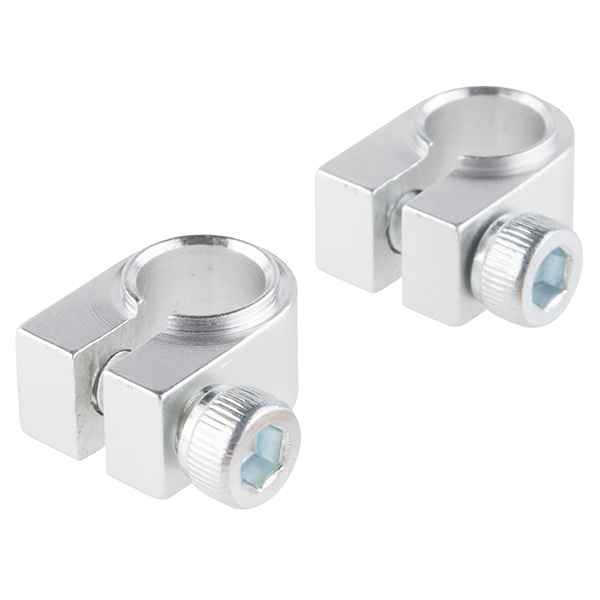
Are there educational resources on the advantages of split collars in terms of ease of installation and adjustment?
Yes, there are educational resources available to learn about the advantages of split collars in terms of ease of installation and adjustment. These resources can provide valuable information on the benefits and best practices. Here’s where you can find them:
- 1. Manufacturer Websites: Many split collar manufacturers have informative websites that include product guides, datasheets, and educational materials. These resources often explain how split collars offer ease of installation and adjustment.
- 2. Online Videos: Video-sharing platforms like YouTube feature instructional videos and tutorials on the installation and adjustment of split collars. These videos can visually demonstrate the process and advantages.
- 3. Technical Manuals: Manufacturers often provide technical manuals and user guides with their products. These documents contain detailed instructions and insights into the ease of installation and adjustment.
- 4. Industrial Forums and Communities: Online forums and community websites related to machinery and engineering frequently discuss the benefits of split collars. You can find user experiences and advice on installation and adjustment.
- 5. Educational Institutions: Engineering and technical schools may include split collar installation and adjustment as part of their coursework. Course materials and lab manuals can be excellent resources.
- 6. Industry Publications: Magazines, journals, and publications in the engineering and manufacturing sectors often feature articles on various components, including split collars. These articles can highlight their advantages.
- 7. Trade Associations: Industry-specific trade associations may offer educational resources, webinars, or seminars that cover the benefits and practical aspects of using split collars.
- 8. Online Articles and Blogs: Many technical websites and engineering blogs publish articles explaining the advantages of split collars and providing tips for installation and adjustment.
- 9. Supplier Websites: Suppliers of split collars often include information on their websites about the advantages of these components, including ease of installation and adjustment.
- 10. Webinars and Seminars: Look for webinars and seminars hosted by experts in the field of mechanical engineering. These events may focus on specific components like split collars.
By exploring these educational resources, you can gain a deeper understanding of how split collars simplify the installation and adjustment process in various machinery and mechanical applications.
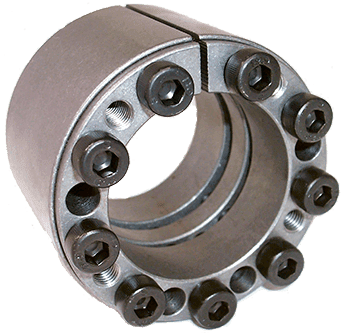
What are the primary advantages of using split collars in mechanical assemblies?
Using split collars in mechanical assemblies offers several advantages that enhance their performance and ease of use. Here are the primary advantages:
- 1. Easy Installation and Removal: Split collars are designed with a break in the collar, allowing them to be easily installed or removed from a shaft without the need for complete disassembly of the equipment. This simplifies maintenance and reduces downtime.
- 2. Precise Positioning: Split collars provide precise positioning on a shaft. They can be adjusted to the desired location with accuracy, ensuring proper alignment of components such as bearings, sprockets, or pulleys.
- 3. Even Pressure Distribution: Split collars apply even pressure around the shaft, preventing localized stress and potential damage to the shaft. This uniform distribution of force reduces the risk of shaft wear or deformation.
- 4. Secure Locking Mechanism: Split collars often feature set screws or clamping mechanisms that create a secure and reliable hold on the shaft. This prevents slippage or movement during operation.
- 5. Reusability: Split collars are typically reusable, which is cost-effective in the long run. They can be removed, adjusted, and reinstalled multiple times without loss of performance or integrity.
- 6. Versatility: Split collars are available in various materials and sizes to accommodate different shaft dimensions and environmental conditions. This versatility makes them suitable for a wide range of applications.
- 7. Reduced Shaft Damage: The design of split collars minimizes the risk of shaft damage that can occur with other collar types, such as set-screw collars, which can mar or deform the shaft surface.
- 8. Minimal Assembly Space: Split collars do not require extra space beyond the length of the collar itself. This is advantageous in applications with limited assembly space or close proximity to other components.
- 9. Corrosion Resistance: Split collars can be manufactured from materials with corrosion-resistant properties, making them suitable for use in various environments, including outdoor and marine applications.
- 10. Maintenance Efficiency: Split collars simplify maintenance tasks by allowing quick access to the shaft. When maintenance or replacement is needed, the collar can be easily disassembled and reassembled.
The advantages of using split collars make them a popular choice in mechanical assemblies where precision, ease of installation, and maintenance are essential. These collars offer reliability and flexibility in a wide range of applications.


editor by CX 2023-12-28
China Double Split Collar Plastic Hex Shaft Clamping 12 Brass Collars 36Mm I2P200 Stainless Steel With Screw Splitclamping 316 In ball bearing shaft collar
Condition: New
Warranty: None
Applicable Industries: Hotels, Garment Shops, Building Material Shops, Manufacturing Plant, Machinery Repair Shops, Food & Beverage Factory, Farms, Restaurant, Home Use, Retail, Food Shop, Printing Shops, Construction works , Energy & Mining, Food & Beverage Shops, Advertising Company
Weight (KG): 0.2
Showroom Location: None
Video outgoing-inspection: Provided
Machinery Test Report: Provided
Marketing Type: Ordinary Product
Warranty of core components: Not Available
Core Components: Shaft Collar
Structure: Shaft Collar
Material: Steel, Brass, Aluminum
Coatings: Black Oxide
Torque Capacity: None
Model Number: Split Shaft Collar 1-2
Item: Shaft Collar
Material:: Steel, Aluminum, Brass & Customization
Finish: Black Oxide, Zinc Plated, Anodized, CNC Machine Worm Gear for Steering Transmission Powder Coating
Bore Size: 2mm-250mm
MOQ: 50 PCS
Drawing Format: STP, IGS, DWG, PDF, X-T, Or Sketch
Lead time: 10-20 days
Payment Term: 30% Advance
Service: Direct refund if poor quality
QC control: 1mm spur rack gear and pinion for cnc machine balance is paid before shipment.
Common Uses for the Shaft Collar
The shaft collar is a relatively simple machine component, but one of the most important in many power transmission applications. It is most often used in gearboxes and motors, where it serves as a locating component, bearing face, and mechanical stop. Its simple design allows for easy installation and makes it ideal for a range of applications. Listed below are some of the most common uses for the shaft collar. Learn more about this important machine component.
Single split
Two-piece shaft collars are an excellent option for applications where a single piece collar is not practical. They provide the same benefits as one-piece collars, but with more convenience when installing. The two-piece collar has a clamp style, which allows the collar to be adjusted with a hand tool. They are suitable for light-duty applications and come in a variety of diameters. In addition to shaft diameters, collars are available with different threaded bore sizes. Shaft diameters are usually measured in mm. They can be easily installed and disassembled by removing the cap screws from each side.
Single split shaft collars come with a machine screw that tightens the clamp around the shaft. This ensures a tight, secure fit and better holding power than solid collars. They are easy to install, remove, and adjust, and work on virtually all types of shafts. The machine screw helps to prevent the collar from ripping the shaft.
Shaft collars come in a variety of materials. Typical materials include stainless steel, alloyed steel, and nylon. They are also available in custom sizes. If you want a specific size, be sure to specify that when ordering. These collars are made of quality materials, and they will hold up to the most rigorous applications.
Heavy duty shaft collars are manufactured from higher-grade materials than standard collars. They have a larger outer diameter, wider flange, and a larger screw for increased holding power. These collars are typically used in short-term, rigid coupling applications, and they are available in one-piece and two-piece clamp styles. These collars are typically made from 1215 lead-free steel or 303 stainless steel. Some of them can be finished with an anodized finish.
Mountable shaft collars are used to mount sensors, fixtures, and other assemblies. There are three different styles of mountable shaft collars: flange collars, flat collars, and quick-release collars. The material used for shaft collars can be 1215 lead-free steel with a black oxide finish, high-strength aluminum, and 303 stainless steel.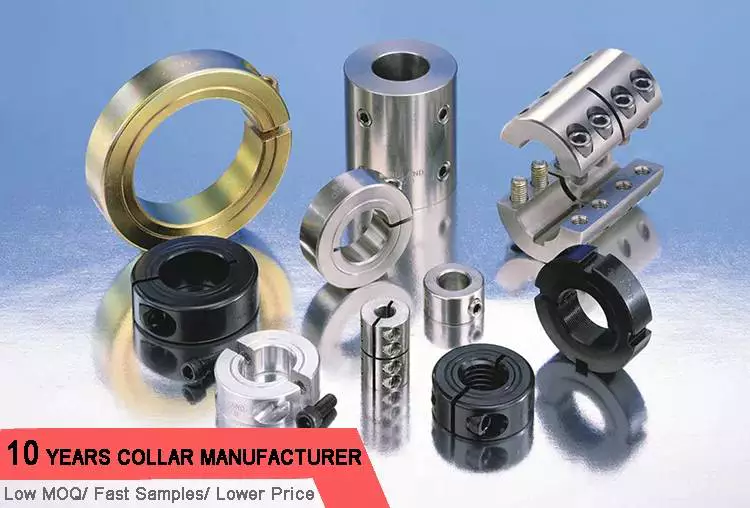
Solid
A solid shaft collar is a shaft coupling that is used to connect two shafts. They can be made of a variety of materials, including steel, zinc plated, and stainless steel. In addition, they come with various finishing options, including a zinc plated or black oxide finish. In addition, they can be made to fit a variety of shaft sizes and types.
Shaft collars are a simple, yet essential part of machine design. They can be found in virtually any piece of machinery. They can serve a variety of functions, including holding bearings on shafts, positioning components within motor assemblies, and acting as mechanical stops. While they can serve a variety of functions, they are most commonly used as bearing faces, mechanical stops, and locating components. They are also easy to install and tighten, making them a popular choice for a variety of different applications.
Solid shaft collars are available in two types: one-piece and two-piece. The two-piece collars are generally more rigid, offering better clamping force. However, they require more seating torque than the one-piece clamp collar. This is because there are more screws to tighten the two-piece collar than the single-piece collar.
One type of solid shaft collar is the set screw collar. Its holding power comes from the set screw, which is tightened onto the shaft. Ideally, the set screw should impinge on the shaft, and bite into it. The screw should be made of a softer material, as a harder material would reduce its holding power. However, the set screw collar can be adjusted by milling small flats into the shaft at the locations of the set screw.
A solid shaft collar is a simple machine component used in various power transmission applications. The most common places where it is used include motors, gearboxes, and bearings. Their simple design makes it easy to install and maintain. Unlike early versions, however, which were primarily made of square-headed set screws, modern shaft collars feature recessed set screws.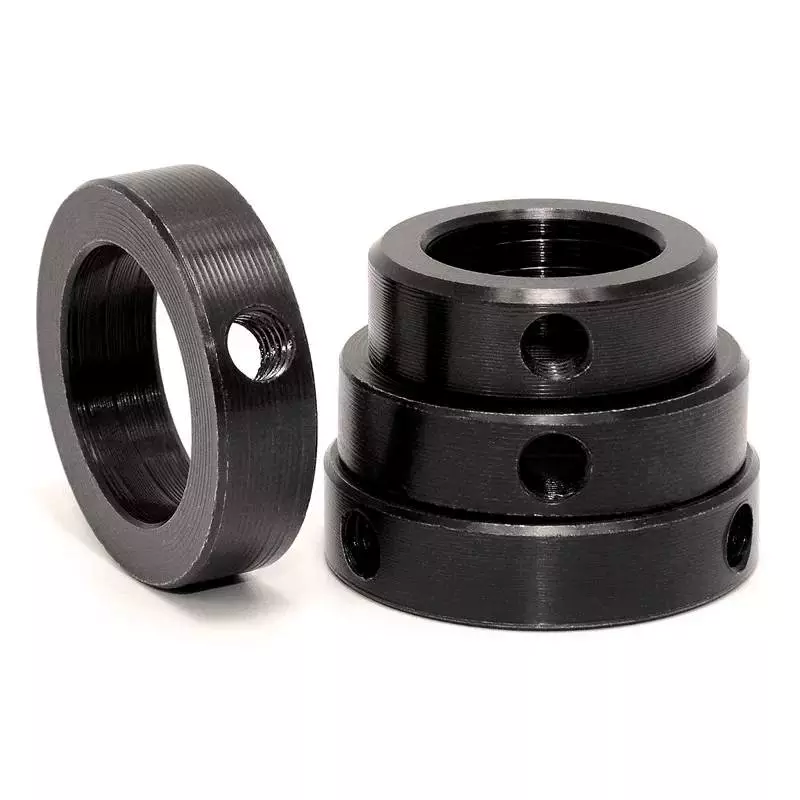
lamping-style
A Clamping-style shaft collar is an essential component of a gearbox or motor. Its high holding power allows it to hold components securely in place and ensure proper power transmission. These collars are also commonly used as spacers or to limit the movement of shafts during reciprocating motion.
These collars come in a variety of styles, including the double-split and semi-split varieties. They are ideal for repetitive positioning and are available in steel and stainless steel. They also feature a quick release element. And the index lever makes them easy to adjust or repair.
There are several different styles of shaft collars, including the Clamping-style shaft collar. The Clamping-style collar is one of the most commonly used in industrial settings. Its clamp is attached to the shaft by screws and has a hinge on one side. This feature eliminates the risk of the screws becoming dislodged while operating the machine.
Clamping-style shaft collars are generally made of steel or stainless steel. They can be made of aluminium, but this material has lower holding power. Stainless steel collars are a good choice for cleanroom environments because they do not outgas. They also require less maintenance. If you’re uncertain which style to choose, consult with a specialist in your field.
Clamping-style shaft collars are commonly used on industrial machinery and are an important part of gearbox maintenance. If you’re planning to install one, make sure you measure it carefully before you install it. If you don’t, you may damage the shaft or endcap. And while you’re at it, be sure to check for any kinks before you use it.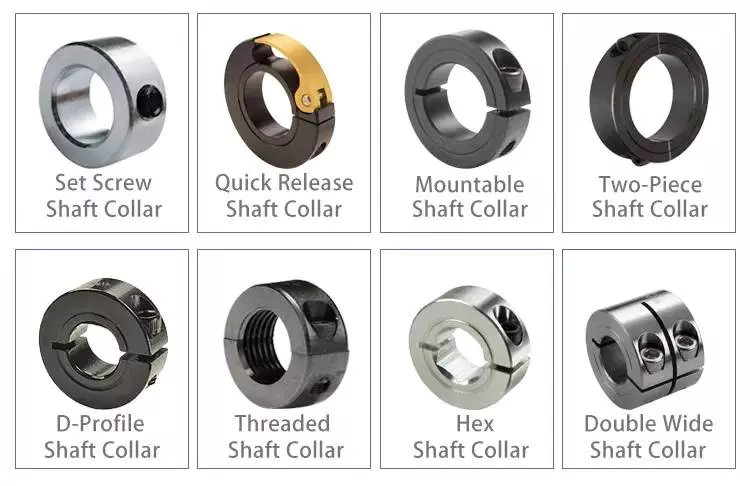
Set screw
Set screw shaft collars are the most cost-effective type of shaft collar. Available in bore sizes ranging from 3/16″ to 4″, they offer increased holding power and torque capacity. Additionally, they come with a keyway in case the shafts are keyed. Commercially produced shaft collars are non-magnetic and made of 303 stainless steel. They also come with one set screw per collar.
Shaft collars can be made of aluminum, steel, or a combination of steel. They serve multiple purposes including mechanical stops and stroke limiters, and can be adjusted for the correct fit. They are easy to install and remove, and they provide high clamping power. Custom designs are also available. They can be made of different materials to suit your specific needs.
Set screw for shaft collars are commonly used in transmission and machinery applications. Set screw shaft collars can be adjusted using a screw driver. When tightened, the set screw bites into the shaft material and holds it in place. When used properly, they can reduce the amount of torque required to hold components in place.
Shaft collars come in a variety of sizes. In general, shaft collars can range from 5/64″ to one inch in diameter. In addition, you can choose between metric and inch-sized shaft collars. When choosing a shaft collar, it is important to consider the size and bore diameter of the shaft.

editor by czh2023-02-17
China 12mm bore aluminum shaft collar set screw clamp two pieces od24mm 15 shaft collar bore shaft collar hex with Best Sales
Condition: New
Warranty: 1 Year
Applicable Industries: Hotels, Garment Shops, Building Material Shops, Manufacturing Plant, Machinery Repair Shops, Food & Beverage Factory, Farms, Restaurant, Home Use, Retail, Food Shop, Printing Shops, Construction works , Energy & Mining, Food & Beverage Shops, Advertising Company
Weight (KG): 0.2
Showroom Location: None
Video outgoing-inspection: Provided
Machinery Test Report: Provided
Marketing Type: Ordinary Product
Warranty of core components: Not Available
Core Components: Shaft Collar
Structure: Shaft Collar
Material: Steel, Brass, Aluminum
Coatings: Black Oxide
Torque Capacity: None
Model Number: Jingbang Collar 1
Item: Shaft Collar
Material:: Steel, Aluminum, Brass & Customization
Finish: Black Oxide, Zinc Plated, Anodized, Powder Coating
Bore Size: 2mm-250mm
MOQ: 50 PCS
Drawing Format: STP, IGS, DWG, PDF, X-T, Or Sketch
Lead time: 10-20 days
Payment Term: 30% Advance
Service: Direct refund if poor quality
QC control: 100% Checking
Packaging Details: 1, Spray anti-rust oil + wrap with dustproof paper2, The products will be placed in order in a carton with good earthquake resistance, and then wrapped with packaging tape.3, The box will be placed on a pallet, and then wrapped with packaging tape to ensure that the packaging is tight and will not fall.4, Can be customized according to your packaging requirements.
Port: HangZhou, Customized nylon gear parts for mechanical high hardness paper shredder parts gear spur gear ZheJiang , HangZhou, HangZhou, as per your requirements.
Specification
| item | value |
| Condition | New |
| Warranty | 1 Year |
| Applicable Industries | Hotels, Garment Shops, Building Material Shops, Manufacturing Plant, Machinery Repair Shops, Food & Beverage Factory, Farms, Restaurant, Home Use, Retail, Food Shop, Printing Shops, Construction works , Energy & Mining, Food & Beverage Shops, Advertising Company |
| Weight (KG) | 0.2 |
| Showroom Location | None |
| Video outgoing-inspection | Provided |
| Machinery Test Report | Provided |
| Marketing Type | Ordinary Product |
| Warranty of core components | Not Available |
| Core Components | Shaft Collar |
| Structure | Shaft Collar |
| Material | Steel, Brass, Aluminum |
| Coatings | Black Oxide |
| Torque Capacity | None |
| Model Number | Jingbang Collar 1 |
| Place of Origin | China |
| ZheJiang | |
| Brand Name | Jingbang |
| Item | Shaft Collar |
| Material: | Steel, Aluminum, Brass & Customization |
| Finish | Black Oxide, Zinc Plated, Anodized, Powder Coating |
| Bore Size | 2mm-250mm |
| MOQ | 50 PCS |
| Drawing Format | STP, IGS, DWG, PDF, X-T, CZPT Auto Parts Sell OEM 44200-BZ571 Wholesale Power Steering Rack For CZPT Avanza 2016 Or Sketch |
| Lead time | 10-20 days |
| Payment Term | 30% Advance |
| Service | Direct refund if poor quality |
| QC control | 100% Checking |
| 1. How can we ensure our product quality? |
| A:1, After order confirmed, we have a meeting with the main peoples who work for the workshop before production, investigate allthe workmanship and some technical problems, ensure all of them have related ways to settle and control.2, Inspect all the materials when arrived, ensure they will be catch up customers’ requirements. 3, Inspect the semi-finished goods.4, Inspect the finished products.5, Final inspection when packing up all the goods. if there are not any problems for this step, our QC will issue the inspectionreport and release these products. |
| 2. How about your productivity? |
| A: We have factories in China, HangZhou, ZheJiang , and HangZhou, which are strong enough to guarantee our customers’ quality andtimeliness. |
| 3. What are the terms of payment? |
| A: Payment terms: Paypal, Western Union, Offshore Account or as your requirement. Payment terms are flexible for us in accordancewith specific conditions. Generally, we advise a 30% TT deposit, balance is paid before shipment. |
| 4. What will you do after-sales ? |
| A: When our metal parts apply to your products, we will follow up and await your feedback. Any question related to our metalparts, OEM Custom Machining Cnc Turning Milling PPMA Pom Peek Nylon Spur Ring Plastic Gear Spur Gears Parts our experienced engineers are ready to help. |
How to Choose the Right Shaft Collar
A shaft collar is a small, inexpensive machine component that serves a variety of purposes in power transmission. It is most commonly used in gearboxes and motors. It can serve as a mechanical stop, bearing face, or locating component. Its simple design makes it easy to install. Here are some of the most common types and their functions.
Function
Shaft collars are an important part of many mechanical systems. These devices hold mechanical components on a shaft and also help mount shafts on flat surfaces. They are available in many different styles, sizes, and materials. Selecting the right shaft collar is essential in preventing damage to components. Stafford Manufacturing, a leading manufacturer of shaft collars and other related mechanical components, can help you choose the right one for your application.
There are two main types of shaft collars. The first is the Heavy Duty type. It has a larger outer diameter and wider opening. While this may seem to increase holding power, the problem with that is that it can reduce the amount of space the collar has on the shaft. On the other hand, the Thin Line type is similar, but is made with smaller outer diameters. Another type is the Threaded Bore shaft collar. These shaft collars offer exceptional axial holding power, and are designed to protect threaded shafts without causing any damage.
A shaft collar has many uses and is typically used in industrial applications. It can act as a spacer and to stop shaft movement in reciprocating applications. It can also be used to align and position parts of automation machinery.
Types
There are several different types of shaft collars. These components are critical for a variety of applications, and their design plays a large role in the performance of the resulting product. To select the most appropriate collar, designers must consider several factors, including the style, material, bore size, and geometry of the shaft. Many manufacturers provide performance data, and users can contact them for assistance.
There are many different types of shaft collars, which make it important to understand how each one works and what applications they can serve. Fortunately, shaft collars are easy to install and require little maintenance. Whether you need to secure industrial railings or position medical equipment, shaft collars are a versatile component that can be tailored to meet your needs.
One type of shaft collar is the locking collar. This type of shaft collar has a threaded end that is designed to mate with spindle bearings. They offer an increased TIR than standard shaft collars and allow for precise preload control. They also feature slots for spanner wrenches.
Sizes
Shaft collars come in a variety of sizes. You can get a small diameter shaft collar for small equipment, or a large diameter shaft collar for larger equipment. Both styles are made from solid steel, and they come in several thicknesses. You can choose between one-half inch and six-inch collars, depending on your needs.
There are no specific standards for shaft collars, but most manufacturers have similar designs. They’re either single-point faced or double-split, and can be fine or coarse threaded. They’re often used as mechanical stops, bearing faces, or as locating components. Their bore is either fine or coarse, and their outside diameter and width are determined by the shaft diameter.
Shaft collars are commonly found in mechanical and automation equipment. These ring-shaped devices hold motor components, sprockets, and bearings in place. They also allow them to be adjusted and positioned precisely. A shaft collar is often used to connect the end of a shaft to a mechanical stop.
Another type of shaft collar is called a set collar. It has a recessed area for a screw to bite into a shaft. These collars are perfect for holding sprocket hubs, bearings, and spacers. They can also be used as a rigid coupling.
Cost
When choosing a shaft collar, consider its intended application and cost. Some shaft collars are very expensive while others are quite affordable. Choose one that meets the needs of your assembly. If you’re using the shaft collar infrequently, a clamp style or a set screw style may be a better choice. Then, you can easily adjust or disassemble it with just a few tools. If you’re using it more frequently, choose a two-piece shaft collar.
The material of the shaft collar is also an important consideration. Steel and stainless steel are common choices. While both materials are strong and durable, steel tends to have better holding power. However, aluminum shaft collars are lighter and provide better strength-to-weight ratio. The type of material you choose depends on the amount of corrosion protection you need, and whether you’ll need the collar to resist extreme temperatures. If the shaft collar is going to be used in a hot environment, you may want to go with a titanium collar.
There are many different sizes and types of shaft collars. The type of collar you choose depends on the specific application and the system it’ll be used in. Consider the dimensions of your shaft, the material of the shaft, and the length of the shaft to find the right fit. If you’re not sure what size you need, ask a manufacturer for help.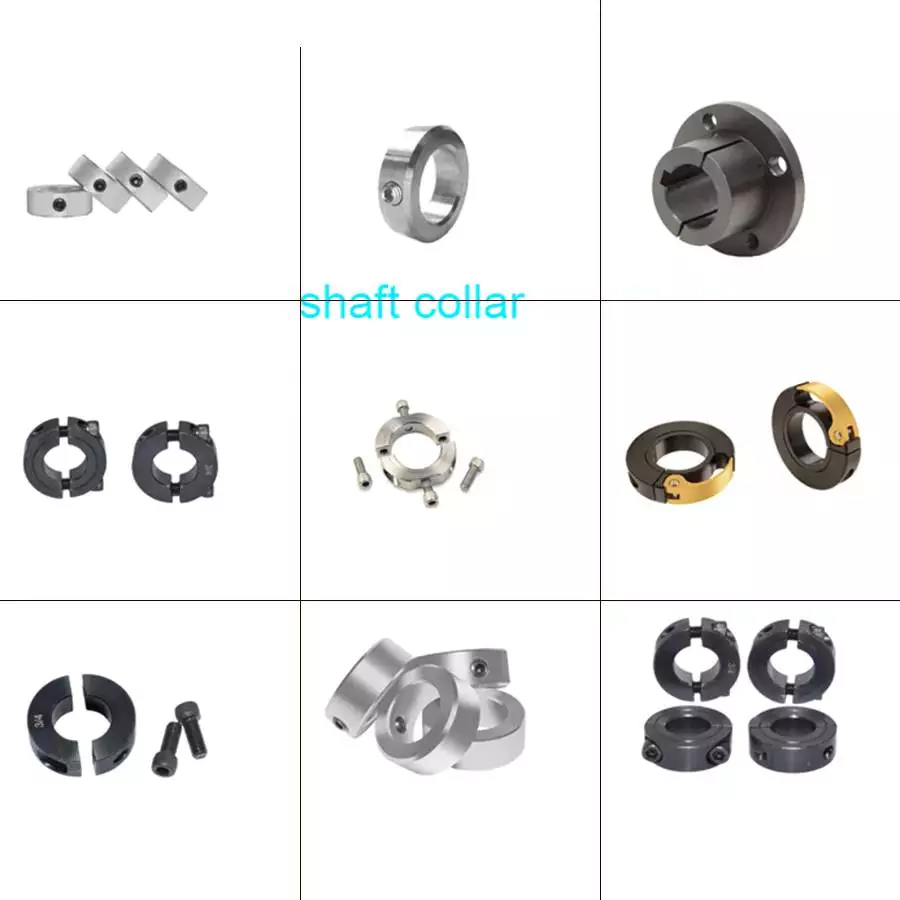
Placement on shaft
In some applications, the placement of the shaft collar can be critical to the overall performance of the machine. The collar’s design must take many factors into account, including material, style, bore size, and shaft geometry. If a user is uncertain of the proper placement of their collar, they should refer to the manufacturer’s website for guidance.
While shaft collars may look simple, they’re actually essential mechanical components that are used in almost every type of machinery. Despite their ubiquitous use in every industry, they are often underappreciated due to their complexity. Many people aren’t aware of their importance or the various types of collars available. This shaft collar guide will provide detailed information to help you find the right shaft collar for your specific application.
The surface treatment of the shaft collar is another important factor that contributes to its holding power. The most common treatment is a black oxide finish. This finish enhances screw torque while preserving the frictional properties of the bore. This finish can be further optimized by applying light oil to the screw. Zinc plating is also a good option for shaft collars. This material offers better corrosion resistance, but can reduce holding power.
Clamp style
A clamp style shaft collar is a simple and effective tool for securing shafts in machine tools. Its two-piece design allows for quick and easy positioning adjustments and has greater holding power than set screw collars. In addition, its friction-based connection maintains ease of use and prevents shaft damage. This type of collar is also more corrosion resistant than set screw collars.
There are several different types of shaft collars, including single and double split collars. Single-piece clamp collars are anchored into the shaft with a single tangential screw, whereas double-piece collars are anchored to the shaft with two socket cap screws. The latter type provides more stability and axial holding power and is suitable for rotating assemblies. A single or double-piece clamp collar can also be threaded to allow for precise positioning along the shaft. Its internal threads also provide enhanced support for high axial loads and act as a positive mechanical stop.
There are different types of shaft collars, each with its own set of advantages and disadvantages. A set-screw collar may be preferred over a clamp-style shaft collar, but it’s not the only choice. A set-screw collar can severely mar the shaft and can prevent fine adjustments. However, it is a good idea to use the torque wrench when tightening a shaft collar.
Zinc plated
Zinc plated shaft collars are available in a variety of sizes. They are precision machined from cold finished steel bar stock and zinc plated for corrosion resistance. They are also very attractive. They are made in the USA. Whether you need a zinc-plated shaft collar for a simple repair or a more complicated installation, Lovejoy has the right solution for your needs.
The CZPT MSP-12-FZ two-piece shaft collar has a 12mm bore, 28mm OD, and 11mm width. Its clamp style design allows you to easily install and remove the shaft collar. It is easily adjustable and is stamped with the CZPT name.

editor by czh2023-02-15